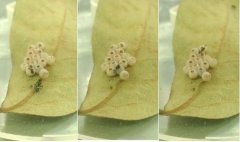Does Mandrake exist? what does it look like? Is it safe to grow Mandela in the garden
Mandrake officinarum, also known as Apple Satan, is making a comeback thanks in part to Harry Potter books and movies. Mandrake plants bloom in spring, with lovely blue and white flowers, and at the end of summer, plants produce attractive (but inedible) red-orange berries.
What is a Mandrake factory? Wrinkles and crisp Mandela leaves may remind you of tobacco. They grow to 16 inches long, but lie flat on the ground, so plants can only reach a height of 2 to 6 inches. In spring, flowers bloom in the center of the plant. Berries appear at the end of summer. Mandragon can grow up to 4 feet long, sometimes very similar to the human image.
This similarity and the fact that eating plants partly leads to hallucinations has led to a rich tradition of folklore and occult. Several ancient spiritual texts refer to Mandela's attributes, which are still used in contemporary pagan traditions, such as witchcraft and Odin. Like many members of the Nightshade family, mandrake is toxic. It can only be used under professional supervision.
Mandelak Information Mandalak is very durable in USDA districts 6 to 8. It is easy to grow Mandela in deep soil; however, the roots rot in poor drainage or clay. Mandrake needs plenty of sunlight or partial shade. It takes about two years for the plant to set up and bear fruit. During this period, keep the soil fully watered and feed the plants with a pile of compost each year
. Do not plant Mandela in places where children play or in food gardens that may be mistaken for eating plants. The boundary of perennials and the front of the rock or alpine garden are the best places for Mandrak in the garden. In the container, the plant is still very small and never produces fruit. Spread Mandrake from offset or seed or by dividing tubers. Collect seeds from overripe berries in autumn. Plant the seeds in containers to avoid being affected by the winter weather. Transplant them into the garden two years later.

- Prev
Wendan pomelo pest narrow-breasted longicorn beetles harm, narrow-breasted longicorn beetles call spawning period control measures
According to the statistics of the Council of Agriculture, by 106, the planting area of Wendan pomelo in Taiwan was about 4272 hectares, and the producing areas were concentrated in Tainan City and Hualien County. In the past, narrow-breasted longicorn beetles, one of the pests of Wendan pomelo found only in the western half of the country, were first found in Hualien County the year before last.
- Next

In order to strengthen the control of litchi stink weevil in Taiwan, the purchase price of litchi stink bug egg slices in four counties and cities has been raised to 5 yuan.
In order to control the litchi stink bug, the Prevention and Inspection Bureau said that since the 1st, the price of the government's purchase of litchi stink bug egg slices in four counties and cities, including Taichung City, Kaohsiung City, Nantou County and Changhua County, has been adjusted to 5 yuan per piece, so as to increase the public's willingness to help remove the egg slices. At the same time,
Related
- A course of planting techniques and methods on how to grow carrots
- How to plant the latest tulips?
- Is it better to pick tea in the morning or in the afternoon? When is the best time for tea to be picked? what is the third or fifth tea?
- Launch Yuanxiao Happy combination Haocha + Tea Yuan healthy Taste
- Penghu Tourism "Fireworks 20 Parade with You"
- 2022 West Lake Happiness holds "Digital Revitalization Voucher" and draws iphone13 and laptop.
- Banqiao Fuzhou social houses are designed to change start-up combined with police elimination to create a safe and livable environment
- The convenient measure of "mechanical weeding" in Xinbei has been abused and the Agriculture Bureau has imposed heavy penalties on the illegal land consolidation.
- Changgeng University Joins Hands with Four Memory Factories to Rescue Memory Talent Shortage
- The list of Taiwan's top 100 MVP managers is listed by the Director-General of the Farmers' Association of Sanxia District.

